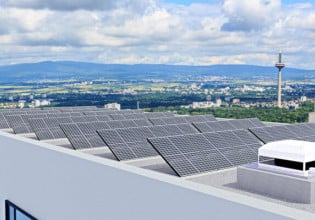California Energy Commission Aims to Increase Efficiency and Demand Response
To meet energy needs of a growing population and a recovering economy in the face of climate change and loss of power plants in Southern California, the state must find ways to significantly scale two preferred resources—energy efficiency and demand response—according to a report approved Friday by the California Energy Commission. The 2013 Integrated Energy Policy Report (IEPR) is the Energy Commission's assessment of key energy issues facing California.
The report forecasts California's future energy supply and demand and features a single managed demand forecast that leaders of the Energy Commission, California Public Utilities Commission (CPUC) and the California Independent System Operator Corporation (ISO) agreed to use for planning and investment purposes. Equally important, each of the nine chapters includes recommendations for how to address regulatory and market challenges. It also lists steps being taken to balance supply and demand and mitigate reliability risks.
"The only way we can maintain a reliable power system in Southern California with minimal economic and environmental costs is with a balanced portfolio of preferred and conventional resources," said Energy Commission Chair Robert B. Weisenmiller. "This IEPR focuses on increasing the deployment of preferred resources, in particular energy efficiency and demand response."
The urgency to scale-up demand response is high, if California is to maintain a reliable electric system, particularly in Southern California, in the absence of the San Onofre Nuclear Generating Station (SONGS), the retirement of power plants that use once-through-cooling, and the need for flexibility to integrate intermittent renewable resources. Despite its primary position in the loading order, there has been little progress toward integrating demand response into standard practice for grid operation. The energy agencies are working diligently to address market barriers to increase deployment of demand response.
California must also plan for how climate change is likely to compromise electricity supply and demand, particularly during heat waves and cold snaps. For the first time, the 2013 IEPR looked at the impact climate change will have on electricity and natural gas consumption, in addition to electricity peak demand. Under a "mid" climate scenario, it found that consumption would increase by about 1,200 gigawatt hours and peak demand by 1.5 gigawatts in the next 10 years (equivalent to three large conventional power plants). Taking climate change into account in the IEPR planning process will reduce the possibility of future electricity shortfalls under a warming climate.
For the first time, the 2013 IEPR included additional achievable energy efficiency (AAEE) scenarios directly within the demand forecast. The energy agencies' leaderships agreed to use the combined mid-demand baseline forecast and mid-AAEE scenario for their respective planning purposes. Significantly, the agreed-upon scenario anticipates nearly flat load growth over the next 10 years.
While trends indicate gasoline consumption will continue to decline, California's population is continuing to grow. With the transportation sector contributing nearly 40 percent of greenhouse gas emissions, increasing low- and zero-emission vehicle use is essential to achieve a 10 percent carbon intensity reduction in fuels by 2020.
"While California is a leader in addressing climate change, further work is needed to reduce greenhouse gas emissions and prepare California's energy system for the impacts of climate change," said Energy Commissioner Andrew McAllister. "Our economy, environment, and public health depend on cutting carbon along with criteria pollutants and investing in the infrastructure needed to deliver safe, reliable and affordable energy. This report identifies what we need to do immediately and in the years ahead if we are to realize our future energy and climate goals."
The 2013 IEPR focused on how to enhance the energy efficiency of both new and existing buildings. By adopting a basic definition of Zero Net Energy, the Commission sets the stage for its inclusion in future updates to California's building standards for new construction. The report also considers policy approaches for achieving meaningful performance improvements in the state's diverse stock of existing buildings—the second largest source of carbon emissions in California.
Achieving California's 2050 greenhouse gas emission reduction goals (80 percent below 1990 levels) will require substantial transformation of California's energy system. These challenges will be explored as part of the Climate Change 2013 Scoping Plan update, in addition to potential interim goals for 2030. The analysis will focus on three strategies to reduce greenhouse gas emissions: energy efficiency, particularly in existing buildings; expanded zero-emission vehicles deployment; and decarbonizing the Western grid. The Energy Commission and California Air Resources Board will also jointly develop metrics to track progress against the 2013 Scoping Plan update.
The report incorporates and relies on data from the state's other principal energy agencies, the CPUC and California ISO. The Energy Commission and CPUC established California's "loading order" for new energy resources that puts energy efficiency and demand response first, renewable electricity supplies second, and new fossil-fired power plants last. The order was adopted in 2003 and is the foundation for IEPR reports.






